FLOW BOULEVARD
A Plan to Eliminate Westside Congestion
(Second study using Beloit Avenue Alternative,
and a more comprehensive concept overall)

PREFACE
This plan has the improved corridor choice using the Beloit alternative instead of the Cotner Avenue alignment north of Pico. The plan still has the key concept of introducing a Flow Boulevard as a frontage road to the 405. The Flow Boulevard improvement with expanded BRT transit along with the current work of the additional HOV lane to the 405, and the Phase 2 of the Expo Line shows how to eliminate all of the Westside Congestion.
The original statement acknowledging the elimination of all congestion was expressed in just a two page statement. That statement will follow this preface and then beyond that will be further discussion of current congestion problems including travel demand analysis of the Westside. The Brentwood dilemma is highlighted and the travel demand for the Westside illuminates the fact that the transportation problem on the Westside is not an east-west traffic problem as it is a traffic problem made by commuting from the north and south to the Westside.
The first image below is the original Cotner Alternative showing the entire 405 improvement corridor from Sunset to Culver Boulevard (note the match lines of streets to fit the 51/2 mile length together). The second image is the new corridor to pair with Sepulveda north of Pico.
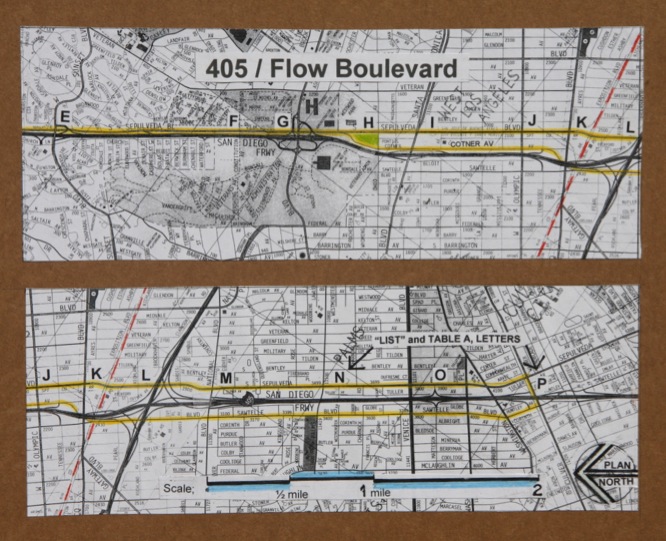
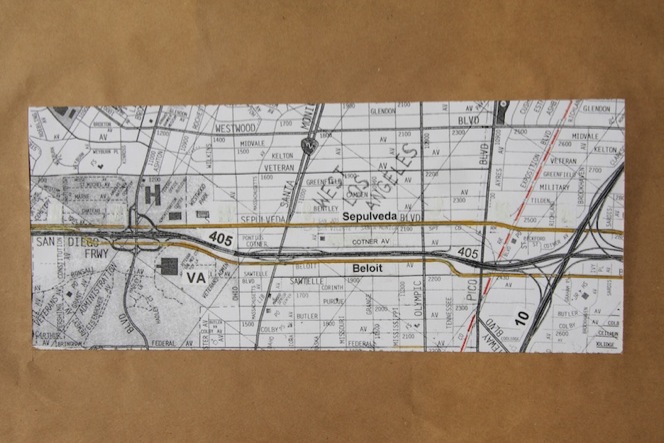
The original two page statement made in December of 2011:
The real prospect of eliminating congestion on the Westside is nearing a reality as existing approved projects (405/HOV lane and Expo line) and potential proposed projects are combined with them. The basic approach to eliminate the existing traffic congestion, since it primarily comes into the Westside from the north and south, is to add additional capacity to the 405 and then as well to the I-10 corridor to connect to the City of Santa Monica. By that capacity improvement the Westside arterial network can be relieved of traffic and therefore the gridlock now experienced on both sides of these freeway corridors as well as the freeways themselves.
The weakest link in these corridors to be improved is the interchange connecting the 405 and the I-10. The freeway interchange traffic is constricted both in its flow-through capacity and turning movement capacity. From there the freeways are further constricted by merging movements on and off the freeways at the very high collection and distribution ramp movements affecting the freeways and adjacent arterial street flows.
The key to eliminating Westside congestion is by adding needed capacity in order to relieve the interchange, the freeways and the ramping operations by the addition of a one-way pair (three regular flowing lanes along with an exclusive BRT/HOV lane in each direction) Flow Boulevard (FB) as a frontage road to the 405 (proposed in a study found at www.flowblvd.com/index3.html). This improves the operations of the freeway and arterial network and is focused on balancing travel demand with infrastructure to essentially “fix what is now broken”. The intension is to limit the improvement to between the Sepulveda pass and Culver City and not to provide additional improved access to the Westside that might be a basis for yet more traffic attracting development that would put the Westside back into yet more congestion. At this time, the objective is to bring balance between existing land use attraction and Westside infrastructure and then maintain that balance through a strictly enforceable Community Plan.
Sepulveda Boulevard would provide the north flowing side of the FB. South of Pico, Sawtelle would provide the south flowing side of the FB. North of Pico, there are two alternative streets to provide southern flow between Wilshire and Pico. The Cotner Street alternative (east of the 405) as developed in the study and Beloit Avenue (west of the 405) the alternative simply mentioned in the study. As an up-date to the study, the Beloit alternative now has political pull since the VA potential subway station has been identified. The prior difficulty was to obtain right of way through the VA property. Now that there is desire to provide some kind of future connection to the east- west rail lines, which would include the VA subway station; political and economic “pull”, could make the Beloit alternative the likely choice. North of Wilshire the FB would flow into the Metro “Sepulveda Pass” project, whatever that may work out to be. Note that the quick and low cost improvements being discusses here are more short term problem solving plans and do not involve the ambitious 10’s of billions dollar price tags that Metro envisions for later projects.
Adding up the improved capacities in the 405 corridor would be 30,000 person trips (pt) with the new 405 HOV lane and with a Beloit FB connection (where no through connection exists between the Pico and Wilshire areas) it provides 80,000 pt of improvement at this area of the corridor. This would total an increased capacity of 110,000 person trips to be distributed to reduce congestion on the freeway, through the interchange, in the ramp use and out of the arterial network in the north-south direction. South of the interchange the increased capacity to the Sepulveda-Sawtelle pair would be about 38,000 pt/day due to BRT lanes and the synchronized vehicular flow in general. In the east-west direction the Expo Line would add approximately 35,000 pt, the I-10 improvements 60,000 pt and three sets of BRT (Wilshire, SMB and Olympic) giving an additional 20,000 pt totaling 115,000 pt of increased capacity to reduce congestion with.
The key to making the interchange work adequately is the reduced 405 through traffic volume and the potential to make direct connections from the freeways to the FB to reduce turning movement demand (such trips would be headed to or from the FB). This allows greater provision of freeway to freeway turning movement capacity by having two full lanes to turn with and not being merged into one lane going into and out of the turn ramps. This additional lane continuity allows about a doubling of turning movement capacity in the critical turns connecting the 405 and the I-10.
Operation of the FB requires priority signalization separate from the cross streets of the arterial grid. This priority is “earned” by the fact that the FB accommodates a higher volume of vehicles than an intersecting arterial would have, has the greater length of travel, presents the fact that the FB makes the freeway system work without failing, provides additional north-south to east-west turning opportunities between crossing arterials with the 405 and also takes travel demand out of the arterial grid so it does not gridlock. While the north bound side of the FB needs to have synchronized signals, with for example one minute vehicle packs and one minute gaps between them (for cross traffic signal periods), likewise the south bound needs the same for continuous flow of the vehicle pack without stopping. The phasing of each side of the FB may be coincident at an intersection (both having green signal periods) or out of phase with each other in any amount that may be of some benefit to the crossing arterial. What cannot be allowed is the breaking of the flow of signal synchronization on either street of the FB pair. With a travel speed of approximately 40mph, this means that the automobile travel time between Wilshire and Culver is about 7 minutes on the FB and the BRT bus can take about 14 minutes using prepaid platform boarding and alighting techniques by staying at less than 1 minute at each arterial bus stop.
- Eliminating congestion is the first step in being able to remove ambiguity so as to stabilize the Westside and make Community Plans for improvements like livable boulevards and needed land uses that allows developers and residents to fully support.
- BRT bus transit works well with the Westside by having lines to and from the FB by connecting with the destinations of Westwood, Century City, Santa Monica, etcetera, without transfers; as well as connections to the future rail stations of the Expo Line, the LAX and the VA Station. And the BRT facilities can be up and running in just a few years.
- By stabilizing the land use and transportation balance, it would then be prudent to insist that City and County planning departments make comprehensive plans for the expected two million additional residents in the next 25 years. In other words, plan for additional development and population in other areas and not to allow excessive Westside development which yet again brings unbearable congestion.
December 4, 2011 by Phil Brown
Some Westside Congestion Highlights and Analysis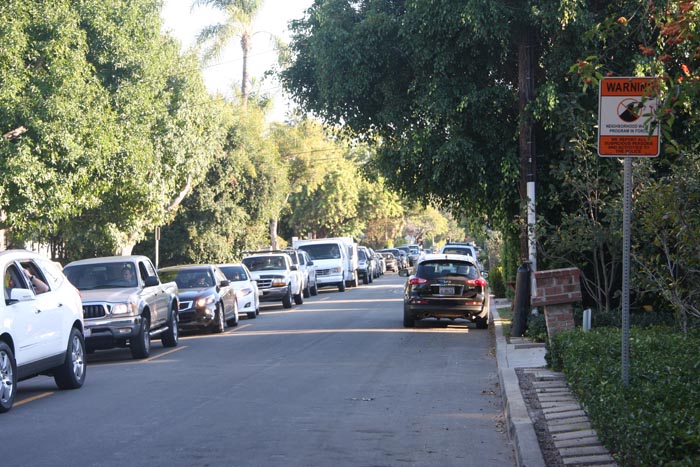
This is an afternoon picture of a side street south of Sunset Boulevard in a Brentwood residential neighborhood. There is so much cut through traffic it simply sits in a queue on this single family residential street waiting until it gets the opportunity to turn onto Sunset to get to the 405 (at a rate of about a mile per hour). Morning traffic is less congested because it is more limited by the restraint of the 405 off ramp from the Valley. But there is still a hefty peak hour out of Brentwood to the backed up ensnarled 405 to get to work. This kind of traffic has changed how people live in Brentwood. Certainly by the safety and character of their neighborhoods but also by their ability to use the goods and services of their own community by being limited by when they can come and go in a reasonable length of time.

This afternoon picture is of Sunset looking west to Kenter Avenue. Here the traffic from the City of Santa Monica is moving towards the 405. It takes about an hour to go the one mile distance. And don’t try to cut through the residential neighborhoods north or south of Sunset because they are no faster being flooded with queued traffic as well.

This portion of a manual assignment diagram focuses on the main problem of the Brentwood traffic problem discussed above. There are approximately 28,000 daily trips of travel demand that want to cut through Brentwood in the “to and from” with Santa Monica. Cutting through Brentwood becomes the preferred choice because it takes longer going on the 405, the interchange and the I-10 to Santa Monica. If the freeways and their interchange had adequate capacities they would work as intended and keep cut-through traffic out of Brentwood.
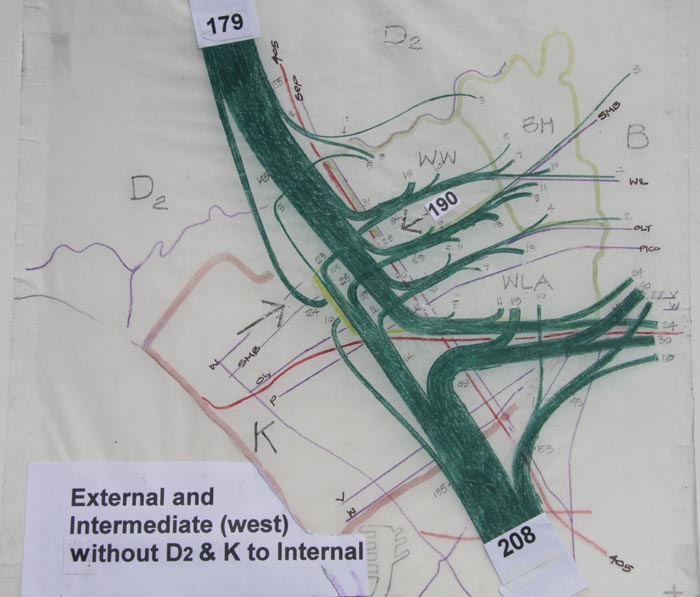
To get a feeling by comparing the travel demand diagrams, look at the long commuter trips going to the Westside above which do not include Santa Monica. To get the long trip travel demand to Santa Monica, see the diagram below.
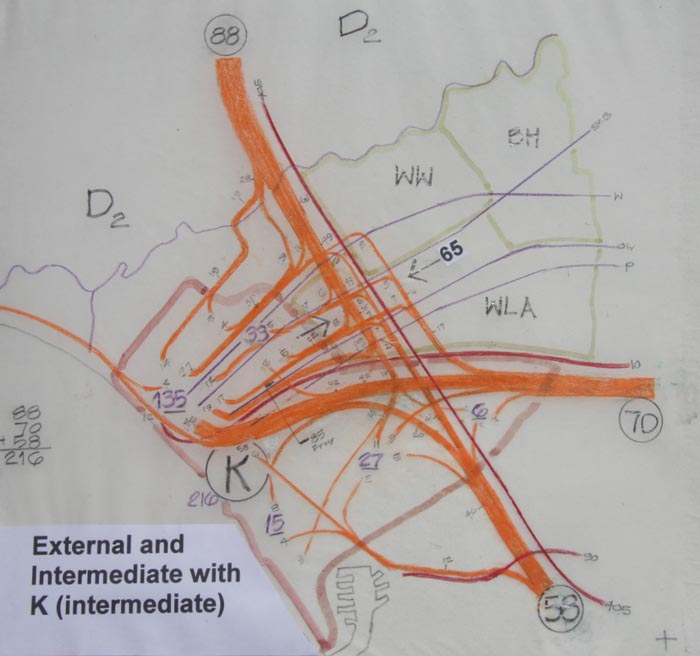
By the width of line, 100,000 person trips per inch on the original diagrams, you can compare “demand” of the various movements. All these diagrams (including those below) are to be added together to get the travel demand for an area. And yet I do not usually show the trips that do not leave a zone, in other words, local traffic because they are so small. Commuter and circulating traffic between communities is where the travel demand volumes build up and need the special higher capacity transportation facilities to keep traffic out of residential areas and on facilities to connect with areas of destination.

Here is a diagram that shows long trip connections exchanging (to and from) with adjacent communities, Palisades, parts of Brentwood and Bel Air, that are not in the congested part of the Westside but who’s traffic may cut through it.
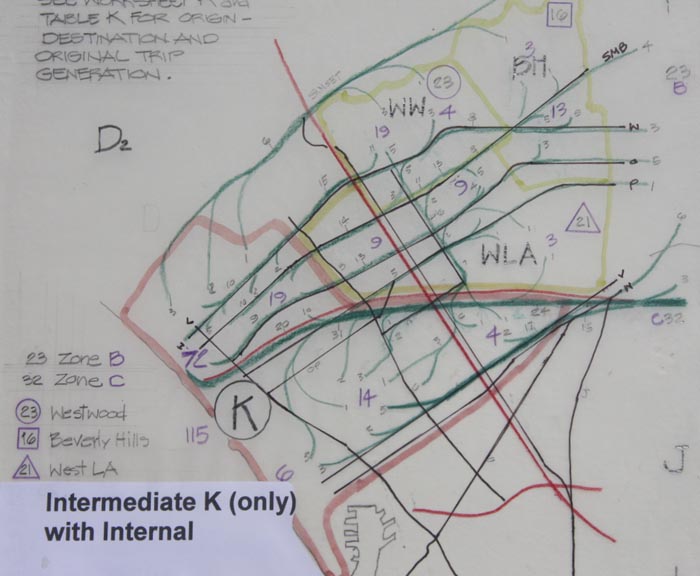
This diagram covers Santa Monica (zone K) exchanging with the Internal zones of the LA Basin, zones A, B and C. The zone A has sub-zones of Westwood, Beverly Hills-Century City and Palms. Zone C is the downtown area and between A and C is the midtown (the Hollywoods, Korea town, etc) areas as zone B. This demand has been assigned to boulevards and the longer trips via the I-10 freeway. And as stated above the local traffic that does not go outside a zone, for example within zone K Santa Monica, that demand does not appear on any of these diagrams and simply has to mentally be figured in when dealing with densely developed areas.
Now it is easily seen by comparing the density of lines on these diagrams where the travel demand exchanges are heaviest and therefore where the traffic congestion is coming from; from the north –the Valley- and the south, -South Bay-.
How well does an $8 billion Subway Extension help Westside congestion?
To compare how Metro deals with this subject, regarding how the Westside Subway Extension is supposed to help solve Westside traffic congestion, we can refer to not only it by looking at the travel demand diagrams but also by comparing “trip end” counts to the Westside. In the congested Westside area there are about 880,000 trip ends (the total of coming and going trips) and includes the through trips that neither start or end in the Westside but must be accommodated by facilities like the 405 freeway connecting the Valley and South Bay.
Metro’s 2035 Subway Extension projection of station boardings (goings) and alightings (comings) for both the proposed Westwood station and the VA station will be compared with total 880,000 trips on a percentage basis. At the VA station it can be expected that the trips that would exchange beyond the VA itself would be about 8,000 trips per day and another 8,000 trips to and from the VA itself. So 16,000 divided by 880,000 is 1.8%. The Westwood station is projected by Metro to have in 2035 a total of 25,260 boardings and alightings. Divide that by 880,000 and that is 2.8%. So adding the two stations together and that is 3.6%. But when you figure that heavy rail subway would attract regional trips to the Westside, the increase in modal split vehicular trips would be more than double or triple that percentage subway is in no way a help in solving the congestion on the Westside.
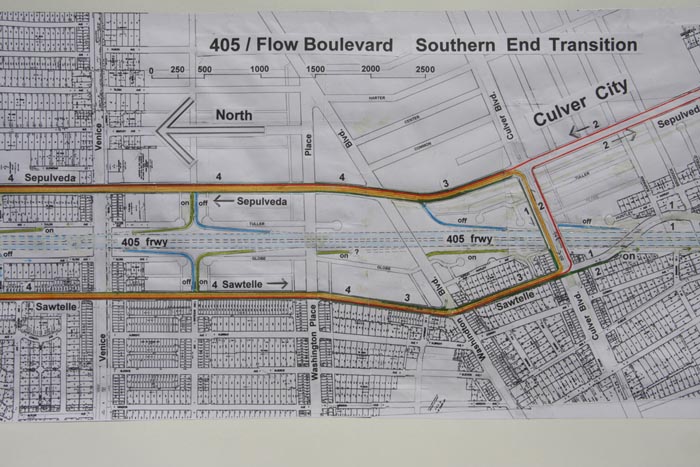
Compare this now to the Flow Boulevard solution where the idea is to “fix what is broken”; the –existing deficient road capacities- and to not attract additional regional trips to the Westside. This concept is supported by the concept that the 405 freeway to the north (at Mulholland for example) is at capacity and no further capacity is being added so no appreciable additional traffic would be coming from the Valley. In a similar way, south of Culver City no additional capacity would be added to the 405 freeway. See the image above where the freeway ramps “feed” the Sepulveda side of the Flow Boulevard in the morning with off ramps and in the afternoon the Flow Boulevard traffic is “put back” with on ramps to the 405 going south. In between Sunset and Culver is where the additional capacity is added with the Flow Boulevard in order to fix the congestion and traffic snarls due to what is a monster “bottleneck” of the deficient 405 corridor, interchange and how Santa Monica is linked to it.
A similar FB /405 specific road and ramp design should be made for the 405 to “feed” the Flow Boulevard and “put back” trips at the northern end of the Westside Flow Boulevard improvement. That design is not developed here in this proposal in the light that Metro has a supposed $1 billion dollar budget, at some time in the future, to improve a connection from north of the Wilshire area to the S F Valley. But the premise of that improved connection is in question because it flies in the face of bringing yet more growth and traffic to the Westside which is not wanted by the residents of the Westside, and also while not having fixed the infrastructure within the Westside itself. In other words even more congestion. It would be better to use that $1 billion (or money from other sources) to fix the Westside congestion now and not be thinking how to make even more future congestion. So the northern end of this proposal to “Eliminate Westside Congestion” is left open at this time to essentially be primarily performed by Caltrans/LA DOT when the Westside community has so directed its preference through its political representatives to “fix what is broken”.
And now for the trip percentage that is involved in providing capacity to eliminate congestion and uncontrolled traffic as compared to the 880,000 Westside trip total:
With the additional route continuity to Wilshire via Beloit… .65,000 person trips
Flow Boulevard operation of Sep. & Beloit, 50% X 130K +…… 32,500 person trips
The 405 is improved 10% by not failing………… ……….....36,000 person trips
Additional Flow Boulevard BRT for 3 Blvds to Westside ........+ 24,000 person trips
Added for a congestion relieving improvement of.......157,500 person trips
Dividing 157,500 by 880,000 Westside trips becomes almost an 18% improvement!
This is a solution to eliminate Westside congestion where it has a 636% greater effectiveness than the Subway Extension at 4% of the cost of the Subway Extension and can be built in about 3 or 4 years. Therefore postpone the subway until the City can afford it and when the people of the Westside has figured out how to control the impacts of new subway and related projects that induce development that brings more regional trips and more new congestion to its communities in the future. Please Westside, FIX YOUR COMMUNITIES!